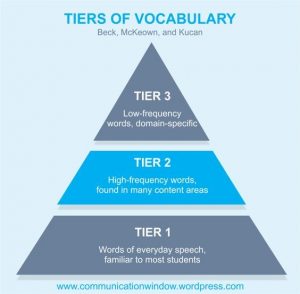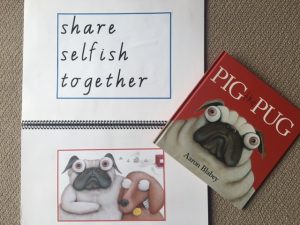As teachers, we’ve all stood in front of our classes at times and felt that uncomfortable pang of anxiety when we’ve realised – “Oh no. I’m losing them!” Our hearts race a little, perhaps a cold sweat grips us, maybe it’s a shudder. Whatever you’re reaction, it’s a feeling we’ve all endured and it’s often followed by self-examination and a session talking to a mentor explaining where it all went wrong.
Well first of all – don’t blame yourself! It’s a healthy part of the learning curve we must all go through as it forces us to consider more deeply how to impart the curriculum while maintaining classroom control.
In this blog, I’d like to share a lesson plan designed to connect your students with the wonder of language. Teaching the love of language is extraordinarily important for developing the self-esteem that goes hand-in-hand with the ability to communicate clearly. It will open many doors in a child’s life well into their adulthood by significantly enhancing their ability to engage with others, exchange ideas and build relationships of all descriptions.
The key aspect of language enabling all this to come about is a comprehensive vocabulary to aid the broad and immediate grasp of verbal and written messages.
Some background…
Beck, McKeown and Kucan’s 2002 research divided vocabulary into three tiers. The lesson plan below targets the improvement of Tier 2 words.

So let’s get started!
- Select a quality text with an accompanying picture suitable for gaining the immediate attention of the age group in your class. A short movie clip is another engaging tool.
- Choose three Tier 2 words from the text/movie. Write these on cards, in a journal or in electronic form.
I use a journal to display the three words:

- Read the text/show the clip so the class enjoys the experience. Make no reference to the chosen words.
- From the prepared cards or display, show the students the target Tier 2 words. Have them pronounce the words and provide their understanding of the meaning.
- Now for the fun part! Reread the text and instruct your students to perform an amusing action or say fun a word when they hear the chosen words. This works because kids love to be kids! Allow this to happen all the way through the second reading and stop reading every time they perform. During each pause, see if they have detected a different contextual meaning for the words.
- Next, further their desire to absorb more knowledge by giving them their personal “Aha!” moments. To achieve this, help them make connections to self, text and their worlds.
- Now it’s time to cement their knowledge. Instruct students to retell the text to a partner emphasising the three words as they do.
- Continue the fun and education combination by displaying the book in the classroom and add the words to your Interactive Word Wall. Every time the words are used in the room, mark this next to the word and develop a fun competition between the words. Which word will win and become the Word of the Week?
The effective planning and teaching of this lesson requires some tools available from my online store. These will assist teachers to maximise the benefits to, not only their students, but to themselves as well. Remember, as teachers, we deserve “Aha” moments too and confidently imparting lessons to receptive minds is a great way to get them.
Happy teaching,
Andrea.


Recent Comments